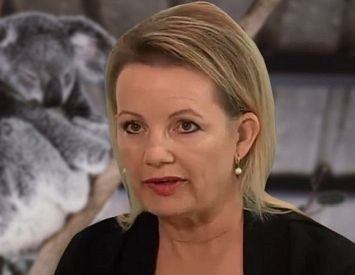An environmental review proposing legislation reforms is being ignored by the Prime Minister and his government, writes Sue Arnold.
THE MORRISON GOVERNMENT is hell-bent on ensuring the environment foots the bill for the catastrophic economic collapse resulting from the COVID-19 pandemic.
Never has Australia’s wildlife and environment faced a more serious risk. Following the release of the Interim Review Report of the Environment Protection and Biodiversity Conservation Act (EPBC Act) chaired by Professor Graeme Samuel, a shocking indictment of failures inherent in the EPBC Act, Prime Minister Scott Morrison made clear his priorities.
Australia’s wildlife and environment are no longer to be regarded as our life support systems by governments. Instead, Morrison is focused on removing the role of the Commonwealth in environmental regulation, passing the responsibilities to state governments.
Enough to give thinking people the horrors.
The Interim Review Report is a mixed bag of conflicting conclusions.
On the one hand, the Executive Summary is headed up with a statement which should be an injunction for any responsible government to take urgent and immediate action:
‘Australia’s natural environment and iconic places are in an overall state of decline and are under increasing threat. The current environmental trajectory is unsustainable.’
Add the 1.25 billion animals lost to the bushfires, an issue not taken into account by the review; Australia’s grim record with the highest mammal extinction in the world; a complete failure to deal with climate change impacts; a complete lack of compliance, monitoring and independent environmental impact studies and a real crisis emerges.
The review failed to consider that the ongoing loss of ecosystems which sustain life has grave implications not only for future generations but the present generation of human and non-human life.
Key threats identified by the review neglect to put the blame where it belongs — with the state and federal governments who have conspired for years to eradicate any legal protection for listed wildlife together with public interest affordable legal access to courts.
Morrison and his Minister for the Environment, Sussan Ley, aren’t waiting for the final report of the independent review. Nor are they concerned by the extraordinary extent of failures or remedies contained in the report. They’re already in dialogue with state governments, preparing relevant legislation which will, if passed, create chaos, destruction and irreversible damage to this ancient continent.
Just prior to the release of the EPBC Interim Review Report, the Department of Agriculture, Water and Environment (DAWE) published a list of successful applicants for the first tranche of the Federal Government’s $200 million Wildlife and Habitat Bushfire Recovery Program.
The grants provide more evidence of the absolute refusal of the Morrison Government to address the environmental crises Australia is facing as a result of not only the bushfires but climate change impacts in spite of the script on the department’s website:
The purpose of the grant program is to support immediate survival and long-term recovery and resilience for fire-affected Australian animals, plants, ecological communities and other natural assets and their cultural values for Indigenous Australians. The program will fund on-ground bushfire recovery actions for species, ecological communities or other natural assets.
Noting that it is now nearing the end of July, any support for immediate survival is long gone. The total amount allocated in the first tranche of grants is $6.9 million according to a spokesperson from the DAWE. A second tranche will allocate $5.1 million, date of distribution unknown.
Any sense of government urgency in providing the remaining funding can be gauged by the following comment to IA from the spokesperson:
“Nothing has been finalised as yet for the additional $150 million.”
The department’s Wildlife and Habitat Bushfire Recovery Program website provides an insight into the projected $150 million allocation:
‘The $150 million will target on-ground action across bushfire-affected regions and heritage places to prevent extinction and limit the decline of native species, help communities and land managers roll-out crucial recovery projects, update conservation plans for threatened species, and track the recovery effort.’
According to the website, the $150 million:
‘...will be made available over two years from 1 July 2020, to support the sustained efforts required to support the long-term recovery of our native animals and plants.’
In January 2020, the Government claimed:
The Australian Government is investing $200 million to help native wildlife and their habitats recover from the devastating impacts of the 2019-20 bushfires across eastern and southern Australia.
This investment will help secure the future of treasured native animals from the koala to the Kangaroo Island dunnart and the northern corroboree frog, as well as unique plants such as the Wollemi pine, Monga waratah and Gippsland bottlebrush.
The first tranche of grants has failed to provide one cent for any koala security or recovery.
This omission is in spite of Minister Ley’s comments in January on releasing an initial $50 million in January:
Environment Minister Sussan Ley says koalas suffered an “extraordinary hit” in the fires and the Threatened Species Scientific Committee will need to assess whether koalas have moved from a vulnerable listing to being endangered in some parts of the country.
Half of the emergency wildlife and habitat recovery fund will go to frontline responder groups including wildlife carers, hospitals and zoos including Zoos Victoria, Adelaide Zoo and Taronga Zoo.
The other $25 million will help fund a government advisory panel led by Dr Sally Box, the newly appointed Threatened Species Commissioner.
In the first tranche of grants made in July, which apparently are part of the initial $50 million, more than $3 million has gone to various universities.
The priorities for tranche two are plants and invertebrates, according to the spokesperson. However, five of the 19 first tranche-funded projects are focused on invertebrates.
Neither the Wollemi pine, Monga waratah and Gippsland bottlebrush get a mention along with koalas. Nor do a raft of species which recorded the highest impact scores caused by the catastrophic fires as detailed by Ley’s expert panel.
Given the latest Budget figures announced by Treasurer Josh Frydenberg, there’s growing concern that the remaining $150 million may have been sunk into other priorities.
In any event, the current round of grants and its priorities give a damning picture of a federal government which has cherry-picked applicants unlikely to address the urgent need to protect ecosystems and dependent wildlife.
Make no mistake, by ignoring the substantive recommendations focused on the environment in the Interim Review Report and the lengthy delay in providing any relevant grants, the Morrison Government has demonstrated a shocking disregard and contempt for the environment. If the Federal Government devolves responsibility to the states, the only beneficiaries will be zoos and sanctuaries.
For any country to be led by a man with no understanding or concern for the environment is a step into the Dark Ages.
To undertake such a profoundly irreversible step without taking a policy to the electorate, thus denying the public any input in the face of Samuel’s report conclusions, is the act of a dictatorship.
As Professor Samuel concluded in his summary:
‘The overwhelming message received by the Review is that Australians care deeply about our iconic places and unique environment. Protecting and conserving them for the benefit of current and future generations is important for the nation.’
Except for the Prime Minister.
Sue Arnold is an IA columnist and freelance investigative journalist. You can follow Sue on Twitter @koalacrisis.
Related Articles
- COVID-19 pandemic has affected food security and sustainability
- Snowy 2.0 doesn't measure up economically or environmentally
- Seeing past and beyond ‘population versus consumption’
- Community bands together to fight devastating drought
- Obligations to the world’s children in the climate emergency
 This work is licensed under a Creative Commons Attribution-NonCommercial-NoDerivs 3.0 Australia License
This work is licensed under a Creative Commons Attribution-NonCommercial-NoDerivs 3.0 Australia License
Support independent journalism Subscribe to IA.
















